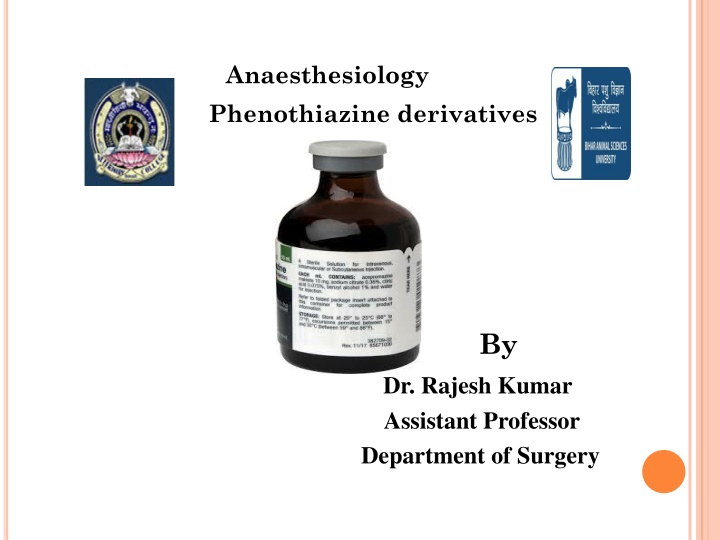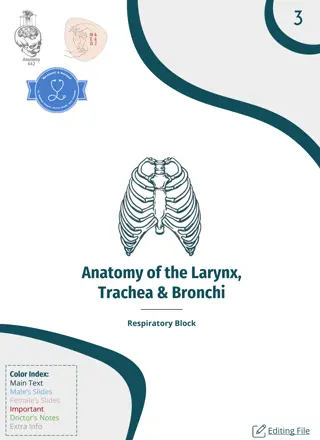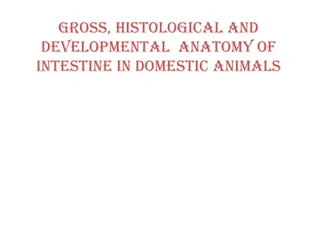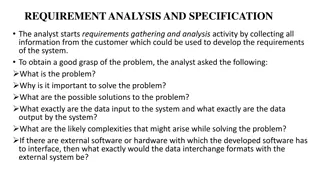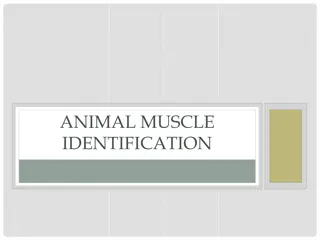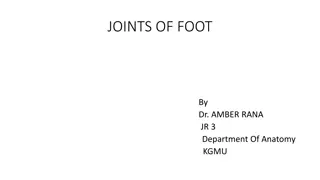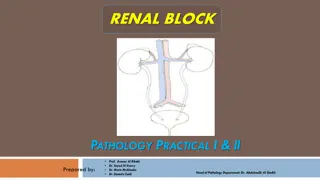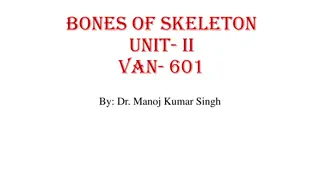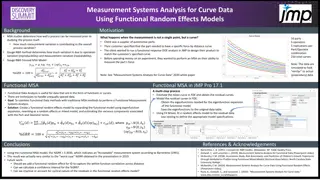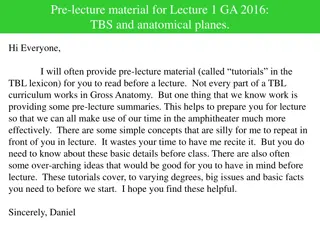Functional Anatomy Fundamentals
Kinesiology, biomechanics, and terminology related to human movement are covered in this introduction. Descriptive terminology, segments of the body, and types of motions are explained with clear illustrations. Explore concepts like linear and angular motions to understand the dynamics of anatomical structures better.
Download Presentation

Please find below an Image/Link to download the presentation.
The content on the website is provided AS IS for your information and personal use only. It may not be sold, licensed, or shared on other websites without obtaining consent from the author.If you encounter any issues during the download, it is possible that the publisher has removed the file from their server.
You are allowed to download the files provided on this website for personal or commercial use, subject to the condition that they are used lawfully. All files are the property of their respective owners.
The content on the website is provided AS IS for your information and personal use only. It may not be sold, licensed, or shared on other websites without obtaining consent from the author.
E N D
Presentation Transcript
Anaesthesiology Phenothiazine derivatives By Dr. Rajesh Kumar Assistant Professor Department of Surgery
Tranquilizers Primary uses is to relieve anxiety As pre-anesthetic sedative To restrain the animals during examination or large animals during transport To prevent animals from licking would or chewing bandages and splints Used as an antiemetic
Tranquilizers commonly used in veterinary practice are (i)Phenothiazine derivative (ii) Benzoidiazepines (iii) Butyrophenone.
Phenothiazine derivatives include: (i) Chlorpromazine hydrochloride (ii) Triflupromazine hydrochloride (iii) Promethazine hydrochloride (iv) Propiopromazine hydrochloride (v) Acetyl promazine (vi) Promazine Acetyl Promazine is most commonly used phenothiazine derivatives in small animals, horse and wild animals.
EFFECTOFPHENOTHIAZINEDERIVATIVESONDIFFERENT SYSTEMS CNS effect: Phenothiazine derivatives produce CNS depression by affecting several part of brain like hypothalamus, basal ganglia, Limbic system, brain stem and reticular activating system. Block dopamine, alpha 1-adenergic and serotonergic receptor They produce peripheral anticholinergic, antiadrenergic and antigangliotic activities.
Cardiovascular effects: Phenothiazine derivatives produce hypotension. Hypotension may cause a reflex sinus tachycardia in patients receiving a thenothiazine derivative. They inhibit myocardial sensitization to catecholamines. Hypotension produced is somewhat dose independent and is due to 1 adrenergic blockade and direct vasodilation action. They produce a (-) ve inotropic effect.
Respiratory effect: At therapeutic dose, the phenothiazine derivatives produce negligible respiratory effect. They may cause a decrease in respiratory rate, but this is usually compensated for by an increase in tidal volume, resulting in a normal minute ventilation. Large dose can depress respiration. Respiratory depression occurs when used in combination with hypnotics or narcotics. This respiratory depression is due to an additive effect.
Other Physical effect: The phenothiazine derivatives produce some skeletal muscle relaxant activity. They cause delayed gastric emptying. Decreases in PCV and total plasma proteins and increases in plasma volume due to hypotension and subsequent shifts of extra vascular H2O into the vascular space. Phenothiazine caused reduction in body temp.
Advantage They may help prevent cardiac arrhythmias Disadvantage Persistent paraphimosis and priapism may occur in large male animals following administration of phenothiazine agent.
Chlorpromazine Chlorpromazine used extensively for premedication in dogs. Dog/Cat Cattle Sheep/Goat = = = 0.5 to 1 mg/kg B.W. I/M or I/V 0.5 to 1 mg/kg B.W. I/M 1 to 1.5 mg/kg B.W. I/M
Triflupromazine hydrochloride: Triflupromazine hydrochloride has about 10 times antiemetic effect than chlorpromazine and 3-5 times the frazquilizing potency. Dog = 1 to 2 mg/kg B.W. I/V, 2 to 3 mg/kg B.W. I/M Cat = 3 to 5 mg/kg B.W.I/M Cattle = 0.1 to 0.2 mg/kg B.W. I/V or I/M
